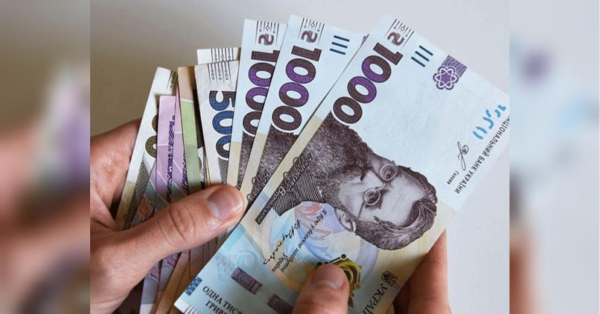
The Biden administration attaches particular importance to its future Asia policy, say international scholars, expecting a new round of Sino-American trade talks, an upgraded version of the Obama-era “Pivot to Asia” strategy, and a continuing dispute over the South China Sea between the US and the People’s Republic.
Joe Biden has made it clear that once he occupies the Oval Office, he will neither immediately cancel the Phase One trade agreement struck by President Donald Trump and China almost a year ago, nor will he remove the 25% punitive tariff slapped on about half of China’s exports by his predecessor.
Biden’s remark came while Chinese scholars and journalists are calling upon the projected succeeding administration to axe Trump’s tariffs war and toss out “the old-fashioned and selfish ‘America First’ doctrine”, as Global Times, a Chinese newspaper under the auspices of the People’s Daily, wrote on 22 November.
A New Round of US-China Trade Negotiations
In some sense, Trump’s tough stance against the People’s Republic reflected Washington’s deep-seated concerns about the necessity to maintain technological leadership and economic influence amid China’s rise, according to the scholar. He highlights that a “new pivot to Asia” is probably a misnomer, since the US’ declared policy on Asia did not really change under Trump.
Nevertheless, it can’t be ruled out that the Biden administration could try to “modify the trade policies of the Trump administration regarding China”, deems Dr Zhang Baohui, director of the Centre for Asian Pacific Studies at Lingnan University in Hong Kong. He cites the fact that newly designated Treasury Secretary Janet Yellen has been a critic of Trump’s trade war with China.

FILE – In this Feb. 14, 2019, file photo, Chinese staffers adjust U.S. and Chinese flags before the opening session of trade negotiations between U.S. and Chinese trade representatives at the Diaoyutai State Guesthouse in Beijing. Beijing on Friday, June 28, 2019
Biden’s ‘Asia Tsar’ & Obama’s ‘Pivot to Asia’
Meanwhile, on 1 December, the Financial Times reported that Biden is considering appointing a White House “Asia Tsar” on the National Security Council.
There are several apparent candidates for the “Asia Tsar” role, according to Jaewoo Choo, professor of Chinese foreign policy at the Department of Chinese Studies at Kyung Hee University, who names Jung Park from the Brookings Institution, former Hillary Clinton aide Jake Sullivan, and Jeffrey Prescott, the executive director of National Security Action. The latter is Choo’s bet, because he “has got plenty of White House experience and is very close to Biden”.
Obama rolled out his “Pivot to Asia” strategy in 2011-2012 sending a unambiguous message that “America is going to play a leadership role in Asia for decades to come”, as the Brookings Institution formulated it in 2011. The doctrine envisaged Washington’s enhanced economic and military cooperation with the countries of the Asia-Pacific region as well as the increase in freedom of navigation operations (FONOP) in the South China Sea in a bid to push back on the People’s Republic’s “nine-dash” maritime claims.
On 4 February 2016, the Obama administration inked the Trans-Pacific Partnership (TPP), a multilateral trade deal among all the major countries along the Pacific Rim with the exception of China. As The Wall Street Journal presumed in March 2019, the TPP passage “would have hamstrung, to some degree, many of China’s larger ambitions”, including the Belt and Road Initiative, Made in China 2025, and “possibly some of the expansion in the South China Sea”. The deal, which was unilaterally torn apart by the Trump administration in January 2017, later morphed into the Comprehensive and Progressive Agreement for Trans-Pacific Partnership (CPTPP).

In this photo provided by U.S. Navy, USS Nimitz (CVN 68) steams alongside the Navy’s only forward-deployed aircraft carrier USS Ronald Reagan (CVN 76, not in photo) in the South China Sea, Monday, July 6, 2020.
Three Traits of a Potential Biden Strategy
The new “pivot to Asia” will be different from what the Obama administration once pursued because it is likely to inherit the core strategies and thinking behind the Trump administration’s Indo-Pacific Strategy, believes Jaewoo Choo, outlining three potential features of Biden’s apparent Asia plan:
· First, there will be an emphasis on values and ideology as the foundation of his Asia policy.
· Second, the goal will be to build an intra-alliance network and enhance collaboration between the US allies, especially within the Quadrilateral Security Dialogue (the Quad), an informal strategic forum between the United States, Japan, Australia, and India.
· Third, the South China Sea dispute will remain high on Washington’s agenda since China is not willing to accept the notion of the sea being international waters, something which the US demands.
Touching upon the Sino-American row over the South China Sea, the professor specifies that the matter is not about freedom of navigation but the People’s Republic’s access to the Pacific waters from their perspective.
“[China] has limited access to the Pacific, the Philippines Strait, Taiwan Strait, Korean Strait and Kurile Strait”, he says. “However, the US wants to build a stronger control of these straits with the Indo-Pacific Strategy and Quad. The key to a peaceful progress and eventual solution to the dispute in the South China Sea lies with China. It is not because China’s claimed sovereignty over the waters, but whether it will embrace international norms and institutions”.
The observers agree that on the South China Sea issue, the current dynamics should be expected to continue.
Sourse: sputniknews.com






